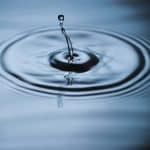Growing an aromatic kitchen herb garden with a hydroponic system is a fantastic way to ensure that you always have fresh, flavorful herbs at your fingertips. You don’t require a vast backyard or green thumb to nurture a flourishing kitchen garden. The hydroponic system enables you to grow herbs indoors, in water, without soil. This method of gardening is clean, efficient, and brings a burst of greenery into your home, not to mention the wonderful aroma of fresh herbs.
Why Choose Hydroponic Gardening?
Before we delve into how to create your kitchen herb garden, let’s explore why a hydroponic system is the best choice for indoor gardening. Hydroponic gardening involves growing plants in nutrient-rich water instead of soil. This system allows you to control the nutrients, light, and water your herbs receive, ensuring optimal growth conditions. Your plants will grow faster, be richer in nutrients, and take up less space compared to conventional gardening.
Dans le meme genre : What Are the Best Dog-Friendly Flooring Options That Can Withstand Heavy Traffic?
Another advantage of hydroponic gardening is that it is less labor-intensive. You won’t have to worry about weeding, pests, or the weather. You can grow your herbs year-round, regardless of the season. It’s also a great way to introduce children to gardening, as the system is compact, clean, and fascinating to watch.
Choosing The Right Herbs
When starting your indoor herb garden, the first step is to decide which herbs to grow. Consider what you regularly use in your cooking and what can thrive indoors. Some of the best herbs for a kitchen garden include basil, parsley, rosemary, thyme, mint, and oregano. These herbs are versatile in the kitchen, adding fresh flavor to a wide variety of dishes, and they adapt well to indoor growing conditions.
A découvrir également : What’s the Best Way to Integrate a Fold-Down Craft Table in a Small Living Space?
Each herb has its unique light, water, and nutrient requirements. Understand the specific needs of each plant to provide the best care. For instance, basil thrives under lots of light and regular pruning, whereas rosemary prefers drier conditions and less frequent watering.
Setting Up Your Hydroponic System
After deciding on the herbs to grow, the next step is setting up your hydroponic system. A basic hydroponic system includes a reservoir for the nutrient solution, a tray or pots for the plants, an air pump to oxygenate the water, and a light source.
Choose a location for your system where it will receive sufficient light, ideally near a sunny kitchen window. If natural light is inadequate, supplement with fluorescent or LED grow lights. Mount the lights above the plants, adjusting the height as they grow to ensure all leaves receive light.
Fill your reservoir with water and add the recommended amount of hydroponic nutrients. These nutrients are available in various forms, and they contain the essential minerals your plants need to grow. Regularly check the water level and refill as needed.
Maintaining Your Herb Garden
Maintaining your hydroponic herb garden requires some commitment, but the rewards are worth it. Regular monitoring of your system will ensure your plants are healthy and thriving.
One of the most critical factors in hydroponic gardening is proper lighting. Most herbs need around 6 hours of light per day, but this can vary depending on the herb. If you’re using grow lights, set a timer to mimic natural daylight conditions.
Watering in a hydroponic system isn’t about quantity but rather quality. Regularly check the pH and nutrient levels of your water to ensure it’s ideal for your plants. The optimal pH for most herbs is between 6.0 and 6.5.
Harvesting Your Herbs
The joy of growing your kitchen herb garden comes with the first harvest. Most herbs are ready for harvesting once they have enough leaves to maintain growth. To harvest, simply snip off the required amount. Always leave enough leaves for the plant to continue growing.
Harvesting your herbs regularly encourages new growth and increases yield. Remember, the more you harvest, the more leaves your plant will produce. Enjoy the fresh flavors of your homegrown herbs in your dishes and the satisfaction that comes with knowing you grew them yourself.
Remember, hydroponic gardening is much more than a hobby; it’s a sustainable and efficient method of growing plants. With a bit of patience and care, you can enjoy the benefits of having fresh, flavorful herbs at your fingertips, grown right in your kitchen. Enjoy the process of creating and nurturing your own indoor herb garden, and delight in the fresh flavors it adds to your meals.
Troubleshooting Common Issues in Hydroponic Herb Gardening
Like all gardening methods, hydroponic systems may face some challenges. However, the beauty of indoor hydroponic gardening is that you have control over most elements affecting your plant’s health. Understanding common issues can help you address them promptly and keep your herb garden flourishing year-round.
Nutrient Imbalances can occur if you add too much or too little nutrients to your water. Different herbs require varying amounts of nutrients. Do your research to understand each herb’s needs and adjust your nutrient solution accordingly. Signs of nutrient imbalance include stunted growth, yellowing leaves, or weak stems. If you notice any of these signs, check your nutrient levels.
Improper Lighting can result in slow growth or leggy plants. As mentioned earlier, most herbs require about 6 hours of light per day. If using grow lights, adjust the distance between the lights and plants as your herbs grow to ensure all parts of the plant receive enough light. Too much light can also be harmful, causing the plant to dry out or burn, so monitor your plants carefully.
Inadequate Air Circulation can lead to mold growth or pest infestations. Ensure your indoor garden is in a well-ventilated area. Also, consider adding a small fan to improve air circulation.
Poor Water Quality can hinder your herbs’ growth. Regularly check your water’s pH and nutrient levels to ensure they are optimal for your plants. Remember, the ideal pH for most herbs is between 6.0 and 6.5.
Conclusion: Enjoy the Bounty of Your Hydroponic Herb Garden
Growing an aromatic kitchen herb garden with a hydroponic system can be a rewarding experience. Not only does it provide you with fresh herbs year round, but it also offers an enjoyable hobby that’s both sustainable and space-efficient.
Hydroponic gardening is a great way to have a garden with less labor-intensive tasks such as weeding or battling pests. Plus, it’s an exciting way to introduce children to the world of gardening. An indoor hydroponic garden adds a touch of greenery to your home while filling it with the wonderful aroma of fresh herbs.
Remember, the key to a thriving hydroponic herb garden is understanding the specific needs of each herb, providing the right nutrients, ensuring proper lighting, maintaining good air circulation, and monitoring water quality.
With a bit of patience and care, you can enjoy the satisfaction of harvesting your own herbs. Whether you’re preparing a family meal, hosting a dinner party, or simply enjoying a cup of fresh mint tea, you’ll appreciate the fresh flavors of your homegrown herbs.
In conclusion, hydroponic systems are a fantastic way to grow fresh herbs indoors, regardless of the season or outside weather conditions. Keep exploring, experimenting, and learning, and your indoor hydroponic herb garden will continue to flourish and provide you with fresh, flavorful herbs year-round.











